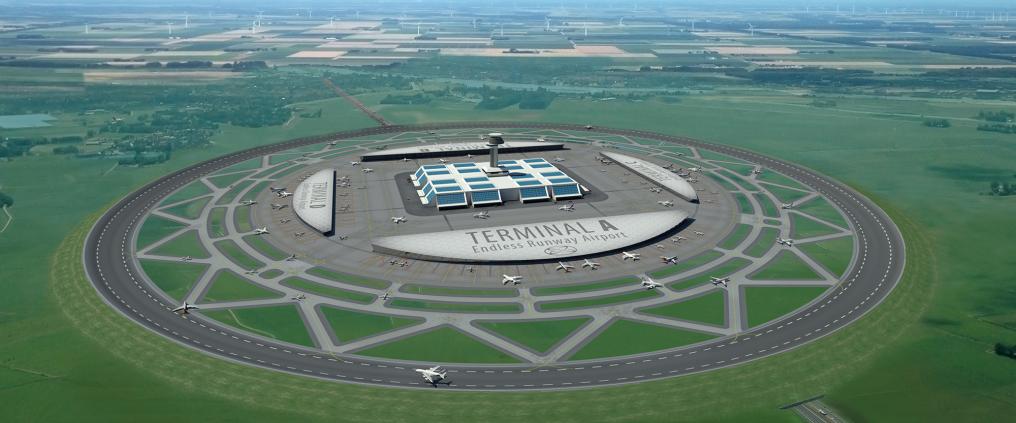According to the Netherlands Aerospace Centre (NLR), the major constraint to growth in air transport is the lack of capacity at airports. Developed by a team of scientists at NLR, the Endless Runway is a radical airport concept that aims to generate a breakthrough in efficient air traffic.
The Endless Runway consists of a circular strip that will make it possible for aircraft to take off in and land from any direction.
The Endless Runway consists of a circular strip that will make it possible for aircraft to take off in and land from any direction. When allowing limited crosswind, airspace users can shorten the global trajectory of the flights through optimized departure and arrival routes. The runway has a diameter of 3 to 4km, with all the terminal infrastructure located within the circle.
Henk Hesselink, Senior R&D Manager at NLR, talks more about this intriguing EU-funded project.
Research work has been carried out with partners in The Netherlands, Germany, France, Spain and Poland. Are these the countries that are most interested in implementing the Endless Runway?
The consortium of NLR (The Netherlands), DLR (Germany), ONERA (France), INTA (Spain) and ILOT (Poland) has been selected based on their knowledge of future operations. We want to obtain a large geographical spread and particularly countries with already existing capacity issues have been involved. These countries all have large airports that we considered as basis for the scenarios that we used to test the Endless Runway. The work was co-funded by the European Commission within the Seventh Framework Programme.
You and your colleagues are looking ahead to 2050 and beyond. By that time air traffic within Europe is predicted to triple. Have any airports in Europe or elsewhere contacted you to ask for more information about the project?
We have received interest from airports in Canada, India, Pakistan and Australia. However, that was for the construction of airports in the very near future. As you have mentioned, the project aims to solve capacity problems while looking at the year 2050. We will need to develop the concept further.
There is one airport seriously interested to further investigate the circular track: an airport in The Netherlands that wants to develop as a drone airport. It has limited space for a runway and wants to accommodate cargo drones of up to 300 kg. Not the small quadcopters that we can buy in toy stores, but real, large, fixed-wing drones.
"This is an interesting development, as the market for cargo drones may be an interesting one for the Endless Runway."
This is an interesting development, as the market for cargo drones may be an interesting one for the Endless Runway. There is a need for a finer grid of small airfields to deliver goods to, for example, cargo distribution centers. The runways can be made much smaller than the airport that we envisage in our study. This will support the business case for the circular runway.
What sort of tests have you completed so far?
Work has focused on capacity and noise issues related to airports and investigated whether the Endless Runway could possibly solve some of these. Up until now, we have performed computer-based simulations and next steps will be necessary to find out how a real landing and take-off will be carried out.
Many reactions I receive are concerned with practical questions and that is exactly what we need to do next: perform live flight trials. The final implementation of the Endless Runway will probably not look exactly the way we describe it now, but we will certainly learn from new trials.
To what environment is the Endless Runway best suited?
The Endless Runway works best when there is little room to develop an airfield; it works best in locations with changing wind conditions. The circular runway requires new infrastructure and will therefore be a large investment for an existing airfield. A new airfield will be easier and we can gain experience from those.
What inspires your research?
One of the main motivators for the work that we perform is innovation. We can predict that the current infrastructure will not work in the future anymore. Therefore, we need breakthrough ideas in aviation and that is what we propose. The message must be: Keep innovating! We need it.
More information on the project can be found at http://www.endlessrunway-project.eu
Photo: Source NLR



